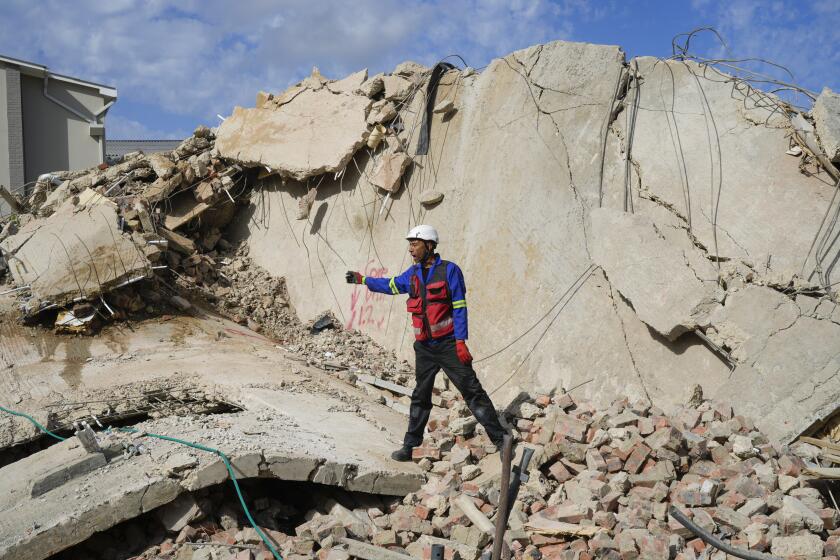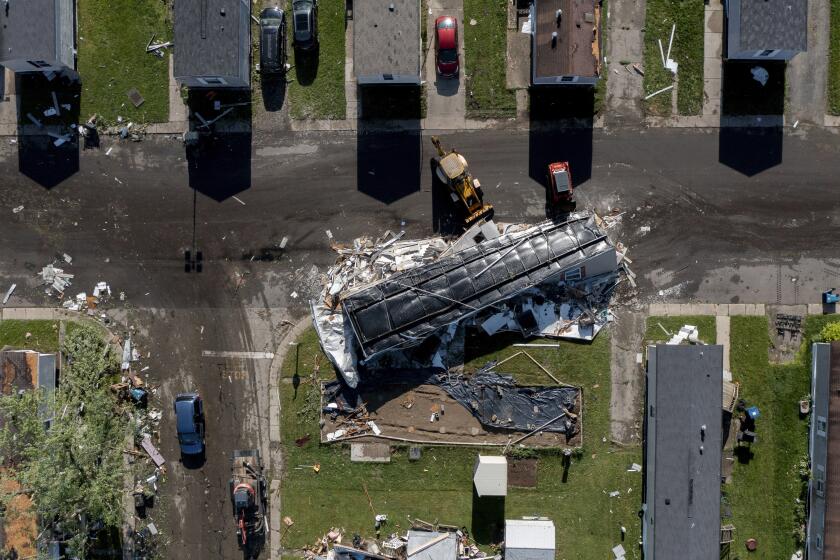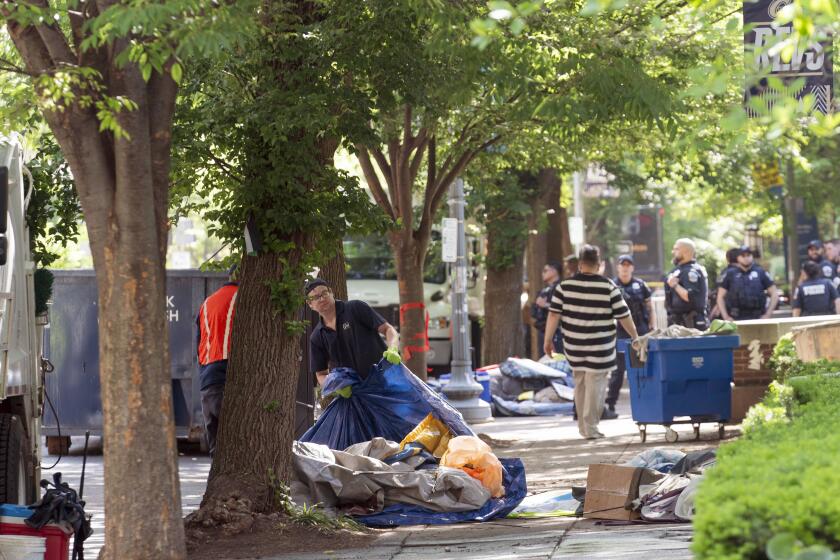Justice Among the Kids
In a world where kids kill kids as a status symbol, the existence of a Teen Court seems a very small response to a very large problem.
The national murder arrest rate has doubled in the past 10 years among those in the 10-to-17 age bracket, creating a trail of blood that leads from play yard to graveyard.
Easy access to guns, as dangerous in the hands of young people as they are in the hands of dull-witted firearms advocates, has turned school campuses into nervous places to be.
Insults, real or imagined, once settled by fistfights behind the bleachers, are now settled with Berettas at point-blank range. The result becomes, not bloodied noses, but shattered lives.
And echoing in the collective conscience are chilling reminders of that violence, like the words of a 15-year-old who killed a boy three years his junior: “I just shot the gun ‘til the gun wouldn’t shoot no more.”
I thought about this as I sat through a session of Teen Court in the oak-paneled replica of a real courtroom at Woodrow Wilson High in El Sereno.
Here, where kids judge kids in an arena as old as justice, there are no restraints that bar a juror from asking, “Didn’t you ever consider the consequences?”
No judge gavels into silence a student who looks a defendant in the eyes and demands, “Aren’t you ashamed?” or questions the impact on the guilty youth who, hammered by his peers, lowers his head in embarrassment and almost imperceptibly mumbles, “Yes.”
*
I heard all of this in a single afternoon in sessions presided over by Juvenile Judge Jaime Corral, who co-founded Teen Court in Los Angeles three years ago with probation officer Phil Egans.
Teen Courts exist now at half a dozen high schools in L.A. County, and what they offer aren’t just mock trials. Real offenders remanded to Juvenile Court agree to face their peers and to abide by the sentences handed down by a jury of student volunteers.
They aren’t violent cases, or even very serious ones in the wide spectrum of youth crimes, but they’re serious enough to bring a kid into court, where the jurors not only decide his fate, but question his motives.
If a defendant is under the impression it’s all going to be fun and games, he quickly learns otherwise when he steps into the courtroom at Wilson High. This is no empty classroom utilized out of convenience, but a serious place of legal atonement.
It has a jury box, spectator seats, a witness stand and a judge’s bench, behind which the seal of the school hangs with the same somber authority as the Great Seal of the State of California that adorns real courtrooms.
Each defendant must bring a parent into court with him to share the humiliation of relentless questioning. Occasionally a juror will turn to a mother or father and ask, “Didn’t you know about this?”
The question hangs in the quiet air for all to ponder, and perhaps to wonder about someday when a bloodstained 15-year-old says, “I just shot the gun ‘til the gun wouldn’t shoot no more. . . . “
Didn’t you know your boy was headed that way?
*
The cases I saw consisted of theft and the use of marijuana. The sentences included community service, drug rehabilitation classes, curfews, essays and apologies.
I sat in on some of the deliberations and heard concerned young people debate not only the seriousness of the crime but the attitudes of the offenders. Smirks lacked repentance and were totaled into the punishment.
Judge Corral, who grew up on the streets of L.A., rarely changes the sentences. What the jurors are doing seems to be working. Among all juvenile offenders who go through the regular system, 30% return to face new charges. Among the 400 who have gone through Teen Court, the figure is less than 4%.
“Kids listen to kids,” Corral said later. “If peer pressure gets them into trouble in the first place, it’s peer pressure that is trying to get them out of trouble.”
I don’t know how effective Teen Court will ultimately be. It’s a whisper in the roar of gunfire that surrounds us, but at least it’s an effort.
While I think I’ll always hear the words of that 15-year-old killer--”I just shot the gun ‘til the gun wouldn’t shoot no more”--I’ll also hear the voice of the young juror who, told by the judge to find out what a juvenile thief needed, replied, “We know what he needs.”
They gave him 85 hours of community service, warned him not to miss school again and ordered his mother to attend 10 parenting classes . . . and went away hoping they’d never have to see either one of them again.
More to Read
Start your day right
Sign up for Essential California for news, features and recommendations from the L.A. Times and beyond in your inbox six days a week.
You may occasionally receive promotional content from the Los Angeles Times.






